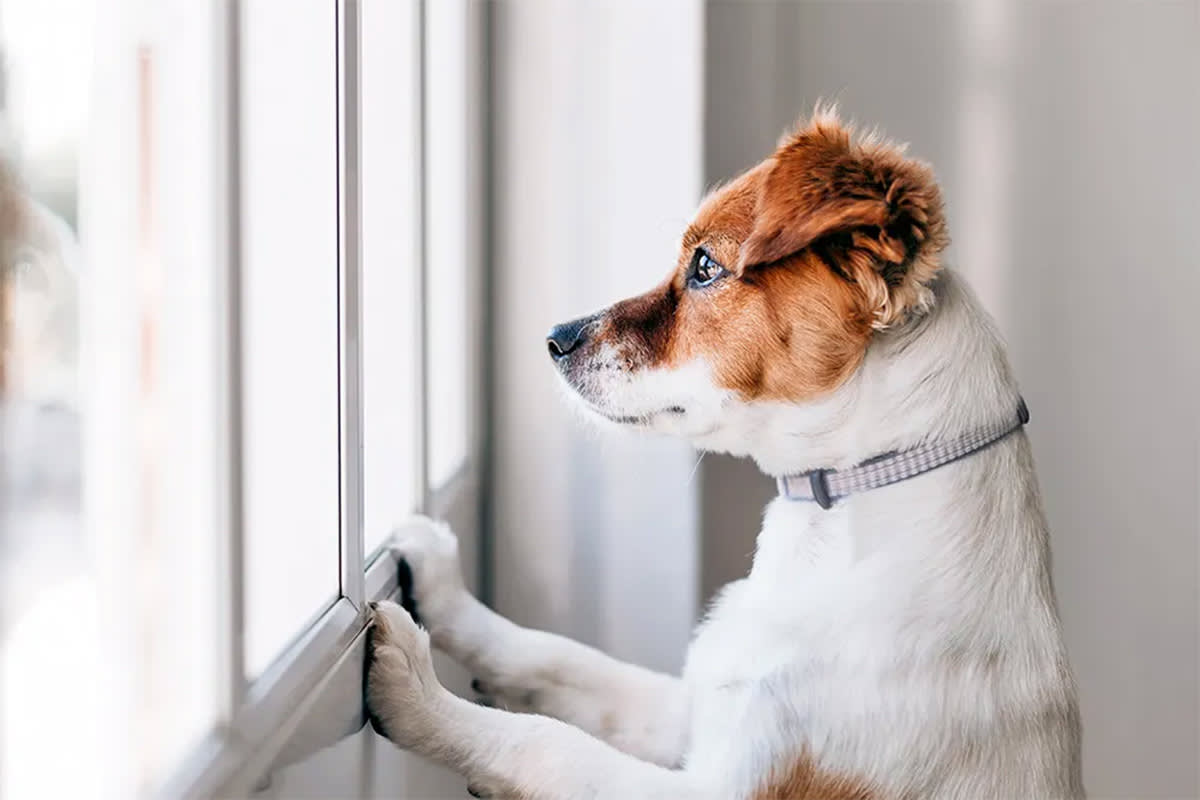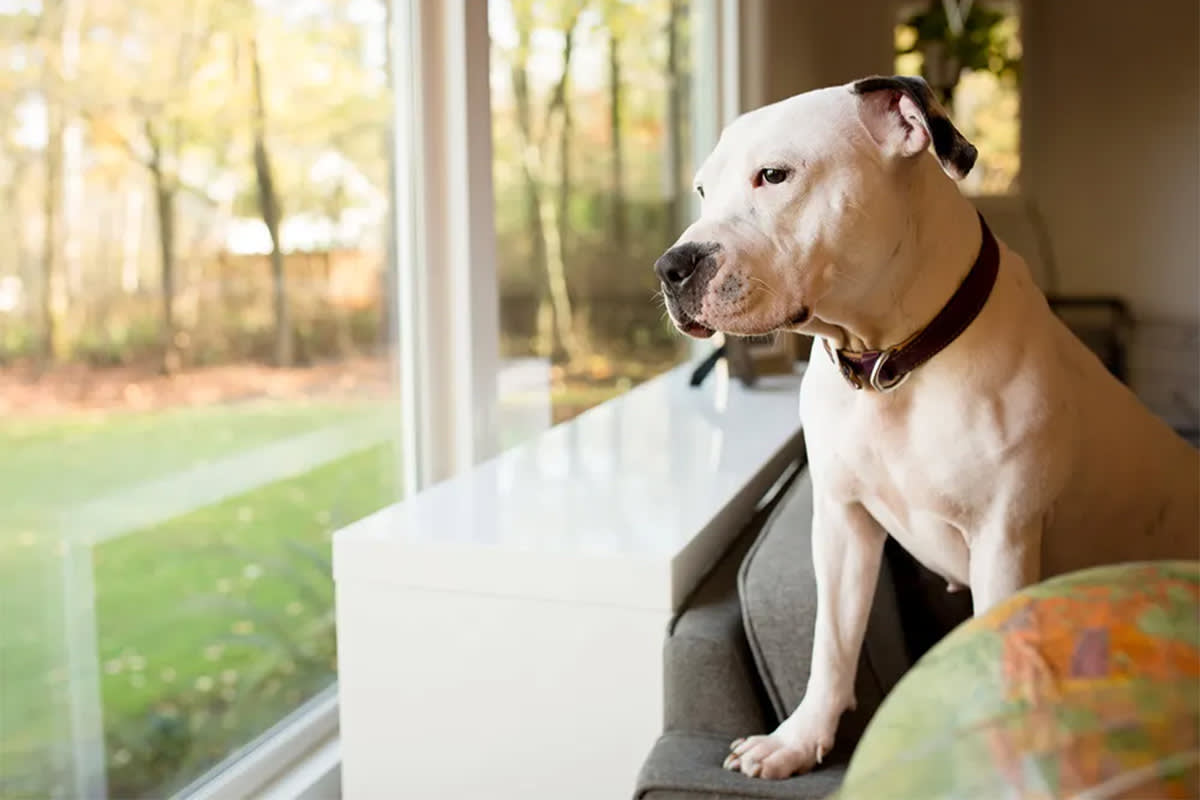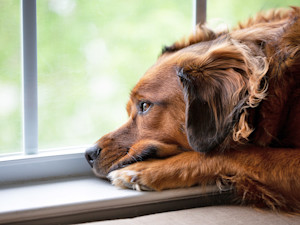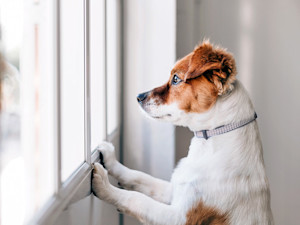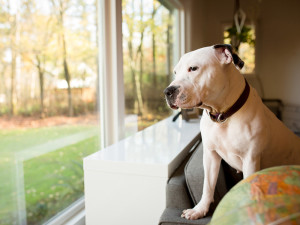In Sweden You Can’t Leave Dogs Alone for Over 6 Hours—Is This a Good Rule?
Here’s what vets and other pet experts in America think.
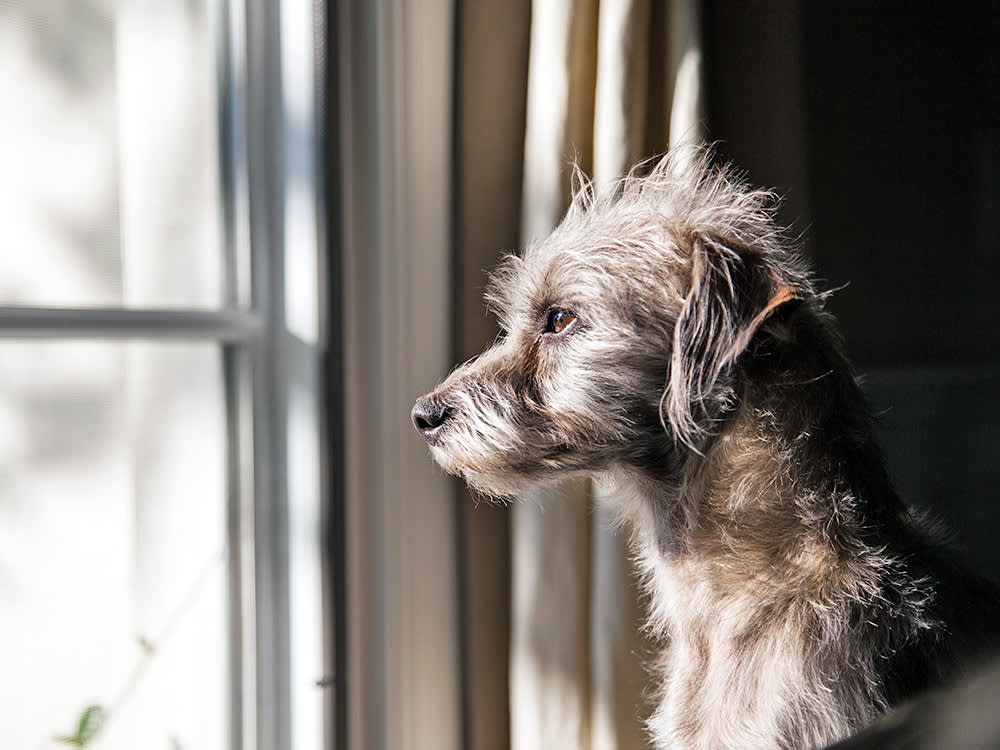
Share Article
Most dog parents know about the looming feeling of guilt when their pup has been home alone for a few hours, but how long is too long? In Sweden, there is regulation stating that dogs should be given a walk at least every six hours during the daytime. For puppies, older or sick dogs, the interval should be even shorter.
You may have seen the viral postsopens in new tab stating that it is illegal to leave a dog alone for more than six hours in Sweden. But while that is the guideline the Swedish Board of Agriculture expects all Swedes to follow, it's not a totally strict law — as in, you won’t be hauled off to jail if you have to work late a few times. But even though officials aren’t knocking down Swedish pet parents’ doors, they can receive penalties for breaking animal welfare guidelines if neighbors report broader neglect opens in new tab or other issues.
The guidelines were originally introduced into Sweden’s Animal Welfare Act in 2008, which explains (according to an English translationopens in new tab) that “dogs must have their social contact satisfied.” It adds that “dogs should be walked at least every six hours during the day, and more often for puppies and older dogs. It is not advisable for dogs to be left alone for a whole day without being walked until the owner comes home at the end of the day. It is important that for dog owners to solve the walking issue in a satisfactory manner.” That rule was later cemented as part of the Swedish Agriculture Board’s code of statute (SJVFS 2019: 28opens in new tab).
Another rule included in these guidelines as part of SJVFS 2020: 8opens in new tab states that pet parents need to check in on their dogs at least twice a day and that puppies under four months should only be left alone for short periods.
How much do you spend on your pet per year?

“Dogs should be walked at least every six hours during the day, and more often for puppies and older dogs,” the text reads. “It is not advisable for dogs to be left alone for a whole day without being walked until the owner comes home at the end of the day.”
The regulation also says that even dogs who are given outdoor access via a fenced yard or other contained space must be walked elsewhere at least once a day.
While these are certainly good guidelines to follow, they may seem like a lot to ask of pet parents with 9 to 5 jobs or other commitments that keep them away from home for extended periods of time. So, we decided to ask some American pet experts if this six hour rule is really legit.
Why is six the magic number?
First off, certified dog behavior consultant Karis Nafteopens in new tab says that although every dog is different, these regulations are a good baseline for pet parents—in fact, she calls them “wonderful.”
“It creates a society that prioritizes the wellbeing of animals in a really good, practical way that more countries could learn from,” she says.
When it comes to six hours, Kinship reports that, in general, a healthy adult dog can probably be left alone for six to eight hours. According to Nafte, however, ultimately how long your dog can be left alone comes down to two main factors: physical needs and emotional needs. Older dogs, sick dogs, and puppies may need to go outside to poop and pee more often. And any dog, regardless of age, may need more attention if they experience stress or separation anxiety.
Veterinarian Dr. Sarah Cortright also says every dog is different, and suggests pet parents watch for signs of stress or health concerns to ensure your pup is not being left at home too long. That can include behavioral changes such as excessive barking or whining, destructive chewing, pooping or peeing in the house despite being previously trained, or frantic greetings when you return.
Physical signs of needing more frequent visits might include weight loss, poor coat quality, or recurrent urinary tract infections (UTIs) from “holding it” too long. To monitor for signs of distress, she suggests using a home camera or pet monitor.
“Separation anxiety often starts subtly — like mild pacing or quiet whining — and can worsen significantly if not addressed early,” she says. “Being able to observe your dog while you’re away allows you to catch those early signs and intervene with training or behavioral support before it becomes a serious problem.”
It’s important to note that dogs who act out when their humans are gone are not “punishing” them, Nafte says. In other words, if your pup shreds your favorite shoes, it’s not because they know those are important to you. “When dogs do stuff like that, it is a way to reduce their own stress or they’re having fun because they’re bored,” she says. “Dogs are not that complicated.”
Nafte also warns dog parents to use caution with the use of crates, especially if they are gone for extended periods of time. Like Cortright, she suggests using cameras or other monitoring methods to ensure the dog is not experiencing stress.
“It’s really, really important that you have appropriately crate-trained your dog so that being in a confined space is not stressful for them,” she says.
Rules should not be set up to penalize pet parents.
Sweden’s regulations are not rigidly enforced laws, but guidelines that are somewhat flexible based on a dog’s age, health, and training. Cortright says flexibility is important with guidelines like these, as strict enforcement could discourage people from adopting pets.
“I support the spirit of legislation that promotes responsible pet care and discourages chronic neglect,” she says. “At the same time, as a veterinarian who often works long emergency shifts, I understand how challenging it can be to avoid long hours away from home. I would never want to punish pet owners who are genuinely trying their best.”
She says a more constructive approach to this issue would be to provide lower-cost, or even subsidized, pet care options that would encourage more people to adopt dogs from shelters.
Luckily, more and more companies across Europe and the United States are becoming dog friendly, allowing for more engagement with pets during the work day. This is a win-win, studies show: Employees in pet-friendly workplaces report higher engagement levelsopens in new tab, with 91 percent feeling connected to their company’s mission and 88 percent willing to recommend their employer to others. And other studies show opens in new tab that having pets in the office can lower stress levels, elevate mood, and foster an overall sense of wellbeing among employees.
Veterinarian Dr. Nathan Rakestraw of TelaVets.comopens in new tab suggests strategies like midday check ins, puzzle feeders, and short training sessions to keep dogs engaged when they’re home alone. And above all, he says, the dog’s schedule should depend heavily on their age, health, and temperament.
He adds that these regulations from Sweden are in support of “good pet welfare.” He clarifies, though, that “what matters most is paying attention to your individual furry family member’s needs.”

Kari Paul
Kari Paul is a Paris-based writer, artist, and filmmaker whose work has been published in The Guardian, The Wall Street Journal, New York Magazine, ELLE, and VICE. She has had an endless march of more than 20 foster kittens, cats, and dogs over the last few years and always cries when they leave. She covers technology, personal finance, and animal behavior, among other topics.
Related articles
![Sad dog waiting by the window at home.]()
Pets Experience Empty-Nest Syndrome, Too
Kids of any age, really, going back to school can can have an affect on your pet.
Why Do Dogs Destroy Some Toys and Not Others?
And it always seems to be the ones we painstakingly pick out for them.
![Sad dog waiting by the window at home.]()
8 Things Our Dogs Are Really Doing While We’re Away
Is it like The Secret Life of Pets, or what?
![Muscular white pit bull stands on couch, looking out window to sunny fall day.]()
Separation Anxiety in Dogs
Does your dog freak out when you head for the door? Here’s some advice.
Why Does My Dog Whimper?
They sound so sad...
Do Dogs Experience Anxiety?
No one—especially your pup—likes that uneasy feeling.
